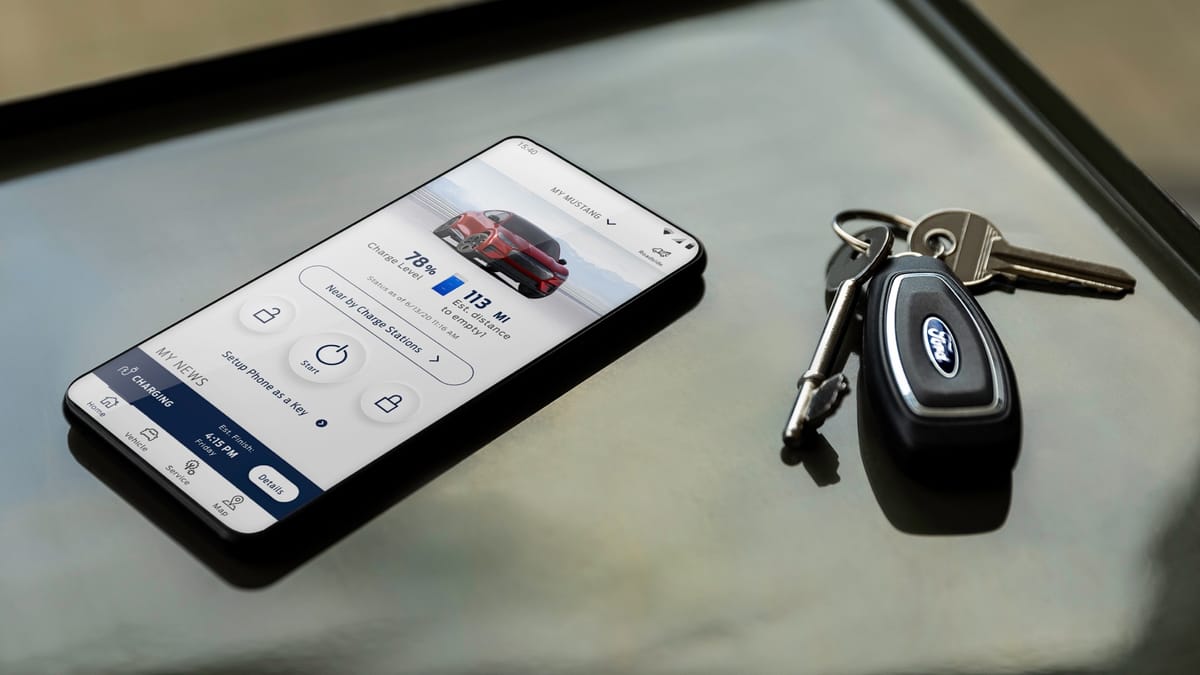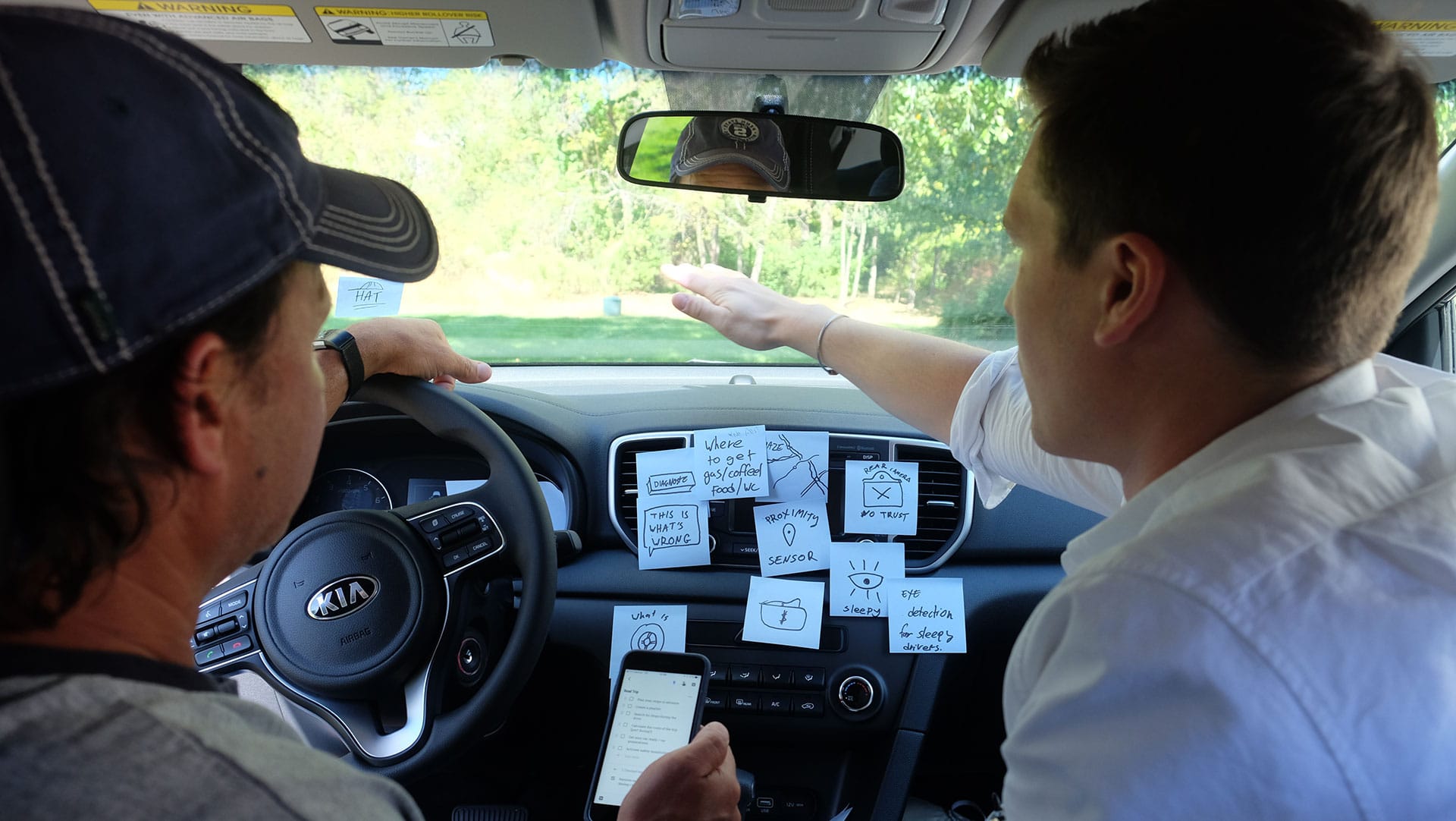Designing for Connected Cars
Internet connected vehicles opened up new opportunity areas for OEMs and dealers to build a deeper relationship with their customers.

I spent considerable time in the auto/mobility space, including working with Ford Palo Alto, where I was a Principal UX Designer for connected vehicles on a cross-functional tiger team with Ford PM+Eng leaders + ICs. Our role was to run ahead of the core digital product org to define the evolution of their connected vehicle customer experience.
The Challenges
- How might we improve the experience of cloud-connected vehicles by providing smart digital services that are relevant to the user?
- How might we ensure our roadmap would position us for the blended gas+EV automotive landscape of the 2020s?
- How might we improve the CX of vehicle maintenance, and reinforce the customer relationship between customer, OEM, and dealership?
The Results (shipped in 2021)
- A reimagined near-term consumer app experience for connected vehicles to help OEMs build and maintain a customer relationship post-purchase.
- A roadmap toward a data-driven maintenance journey that can surface vehicle insights and help customers take appropriate action over the life of the ownership journey.
Work Summary
Connected vehicles are increasingly common, yet the space is highly fragmented, with everything from OEM-provided apps to third-party devices to mobile-device integrations such as Apple CarPlay and Android Auto all competing for the consumer's attention. With so many ways to do the same thing (e.g. maps, music, etc), we first began by exploring how consumers are currently interacting with their cars, and how they extend a car's functionality with 3rd party devices.

Over the course of this project, I conducted field research in California, Texas, Illinois, Wisconsin, Arizona, and Pennsylvania to surface insights from a variety of populations, speaking to everyone from electric vehicle hypermilers to sports car tuners to 4WD offroad enthusiasts, each of which had different reasons for and method of connecting technology to their vehicles. We also spoke to people with older vehicles that were not app-enabled to see if there was a way to create value for them even without a direct link to the vehicle, and to uncover the needs of owners further along the ownership journey.
Beyond end-user research, we discussed the primary drivers of revenue and loyalty both at the OEM and dealership level. Connecting our concepts to these business needs ultimately allowed us to uncover an unmet need that was a win/win/win for end users, the OEM, and the dealers. We then prototyped, tested, and designed a reimagined experience that shipped in 2021.
If you'd like to learn more about my role and more specific problems these projects addressed, please get in touch.